Heavy Metals In Cocoa and Chocolate: A New Study
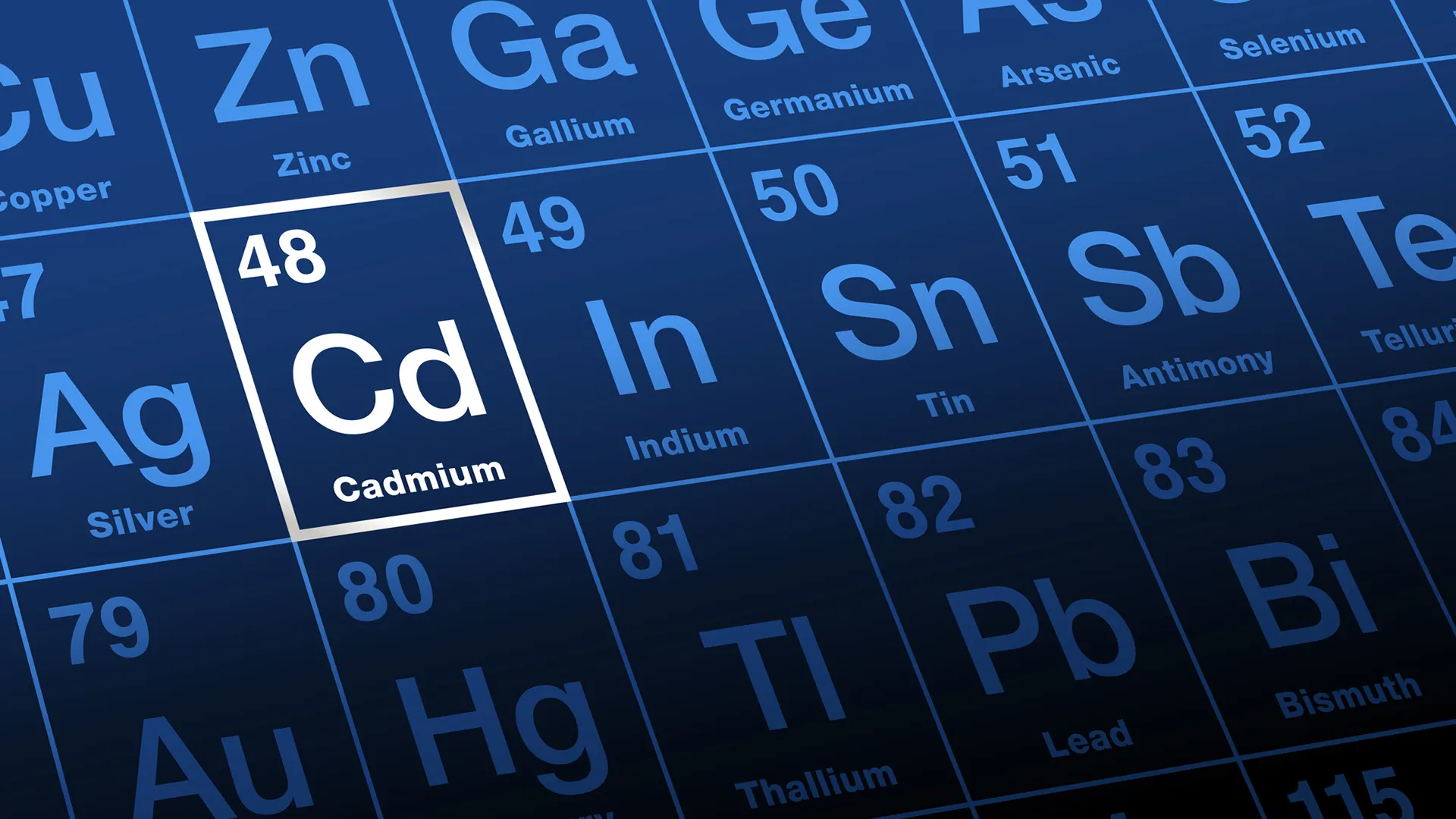
Cocoa and chocolate have long been known to contain heavy metals; the most studied have been cadmium and lead. But does eating high cocoa content chocolate and cocoa powder present a real risk to your health?
Cocoa and chocolate have long been known to contain heavy metals; the most studied have been cadmium and lead.
Both cadmium (Cd, from the Latin cadmia or mixture) and lead (Pb, from the Latin plumbum or liquid silver) can be toxic and/or cause organ failure and other conditions.
Young children, whose brains and bodies are still developing, are especially vulnerable to the effects of lead toxicity.
I’ve written about lead and cadmium in chocolate/cacao, and addressed purported risk vs hazard in articles here on TheChocolateLife (oldest first):
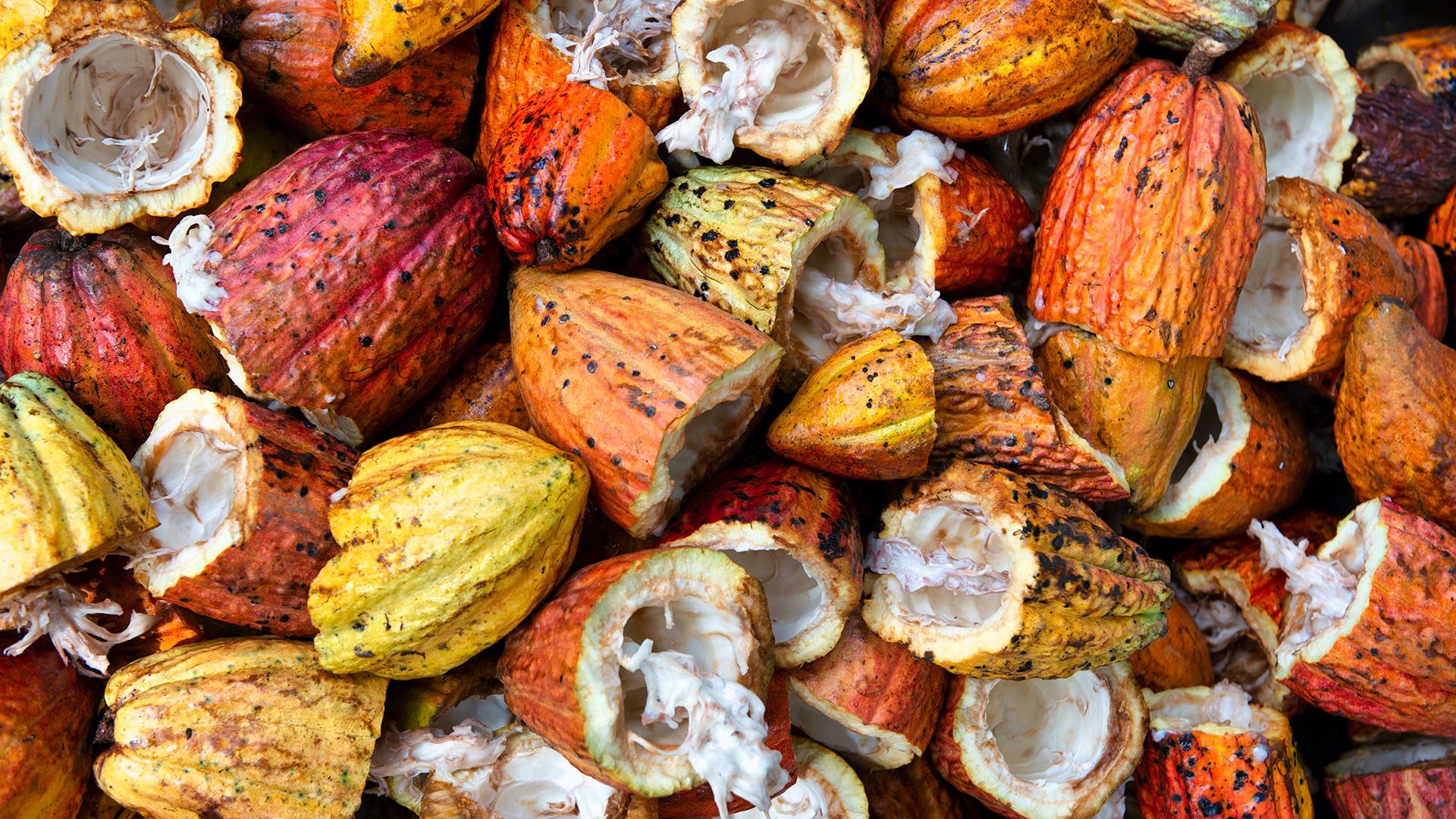
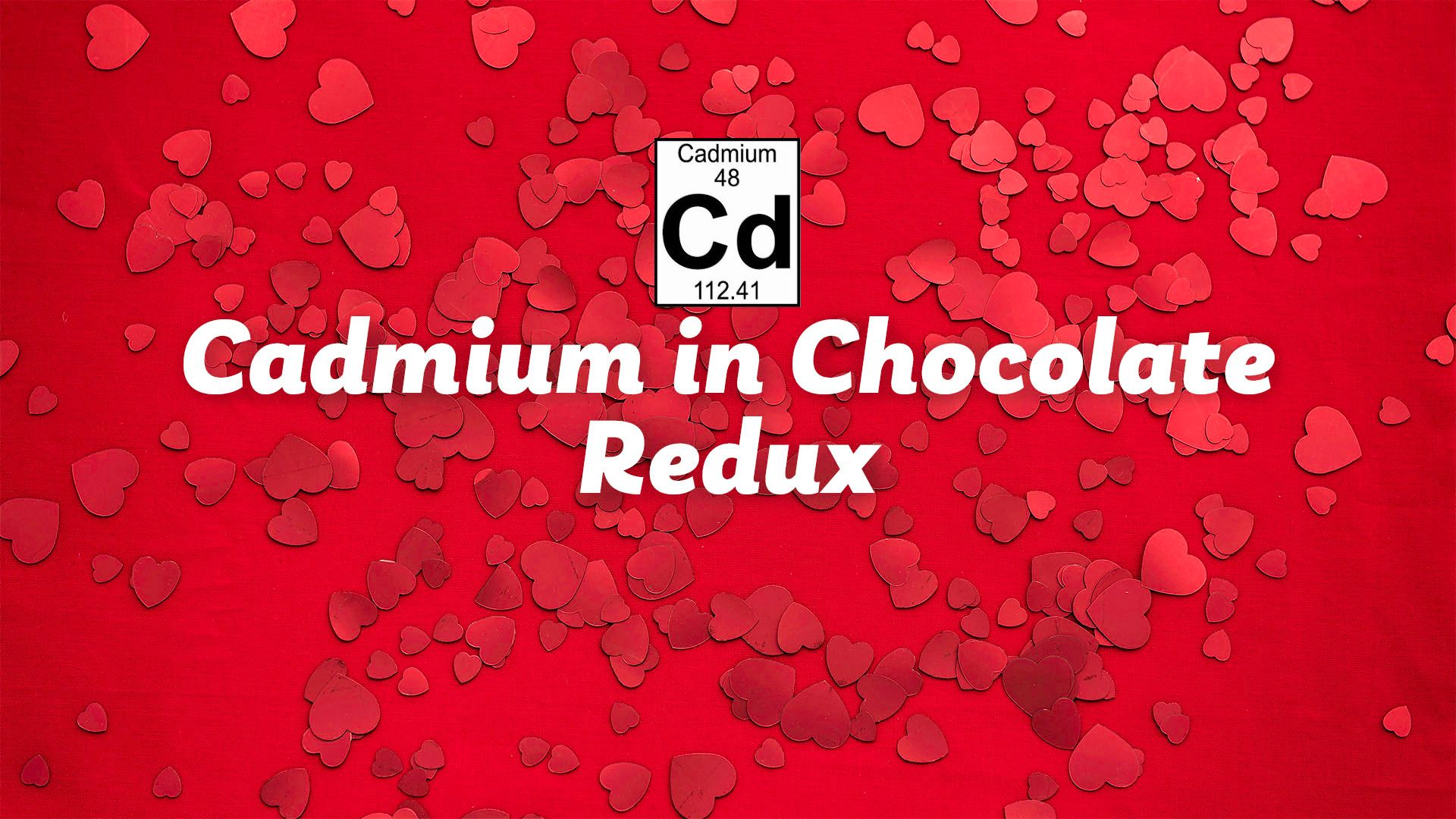
Not an article by Keith – but a livestream where we discuss the issues.
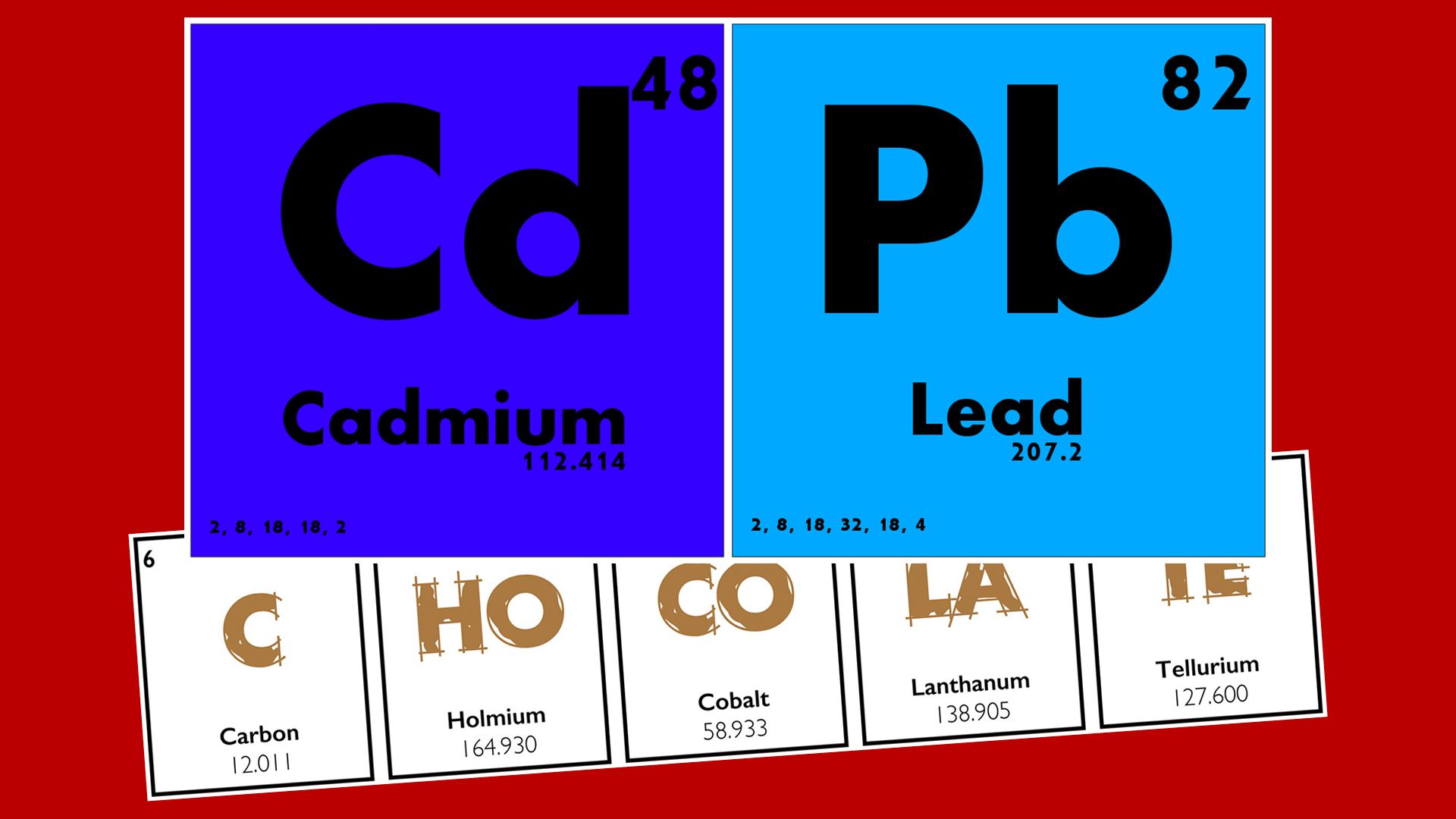
Both articles started with a search of studies on PubMed, which revealed that reports of cadmium and lead toxicity from food are rare, mostly due to unnatural exposure, such as eating food grown on industrially-contaminated soil, or inhaling lead- or cadmium-contaminated air.
A New (and Credible) Study – With a Twist
Tulane University researchers recently published what is perhaps the most detailed analysis of metal content in chocolate to date.
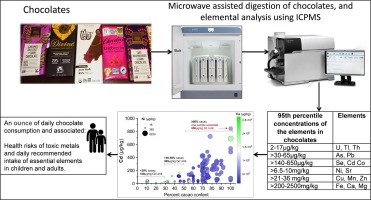
Funding: all from a start-up grant from Tulane University. No commercial funding.
The authors analyzed 155 samples from chocolate bars of varying cocoa percentages from geographically diverse origins.
What’s unique? Along with lead and cadmium, the researchers also analyzed the samples for a broad spectrum of other potentially toxic metals, including:
• Nickel
• Arsenic
• Uranium
• Thallium
• Thorium
The Twist
Just as interesting: The analysis looked for essential minerals – aka the good stuff:
• Calcium
• Magnesium
• Manganese
• Zinc
• Copper
The analyses also looked for two other elements, strontium and cobalt. While not essential minerals, cobalt is a critical component of cobalamin (vitamin B12), and strontium has been studied for the treatment of osteoporosis (though results have been inconclusive).
Essential minerals were included because:
Investigating a broad spectrum of elements beyond Cd and Pb is crucial to identify not only the presence of emerging toxic contaminants, but also essential nutrients present in chocolates.
Details on the bars tested
A broad range of popular, premium, and fine chocolate bars, milk and dark, were analyzed. Sources were obtained online and from brick-and-mortar retailers.
Some brands tested (providing the vast majority of the 155 bars analyzed):
1) Endangered Species Chocolate Company (private label)
2) Dove (owned by Mars)
3) The Hershey Company
4) Lindt & Sprüngli
5) Lily’s (owned by Hershey)
6) Ghirardelli (owned by Lindt)
7) Alter Eco (private label)
8) Beyond Good (bean-to-bar)
9) Chuao (melter)
10) Marou (craft/bean-to-bar)
11) Pralus Pyramid (craft/bean-t0-bar)
12) Taza (bean-to-bar)
13) Theo (owned by American Licorice)
14) Napolitains (? this generically refers to a format, not a company)
15) Blanxart (bean-to-bar)
16) Dick Taylor (craft/bean-to-bar)
17) Ki’Xocolatl (owned by Belcolade/Puratos)
One sourcing goal was to represent all major cocoa-producing regions around the world: Asia Pacific, West Africa, East Africa, South America, Central America, North America (Mexico), and the Caribbean. There were also some bars of mixed origin, since some makers use a blend of cacao beans. Cacao origin was unknown for only four of the bars, so overall, pretty comprehensive.
What they found
- Toxic metal content was generally low.
- Eating an ounce of even dark chocolate daily posed no health concerns. The data suggested that cadmium was a minor concern, and only in children. (Even then, I doubt many kids, especially young children, are eating an ounce of dark chocolate every day. Enough said.)
Essential minerals, especially iron, magnesium, zinc, copper, and manganese, were abundant. Important, because these minerals can disrupt the bioavailability of cadmium and lead.
An ounce of dark chocolate had a significant amount (expressed as percent of the Dietary Reference Intake, or DRI) of several minerals that reduce the bioavailability of toxic metals:
• Copper (47-95%)
• Iron (16-38%)
• Magnesium (6-25%)
• Manganese (9-41%)
• Zinc (10-14%)
The Yin and the Yang
Cocoa from Africa was lower in cadmium than cocoa from Central and South America, but it had more of other heavy metals, such as nickel, uranium, and thorium, which are toxic to humans but quite valuable in industry and technology. Cocoa from Africa also had fewer beneficial minerals.
Metals/minerals appeared to be from the beans, not the manufacturing process. How do they know? Because of the “statistically significant strong” relationship between the percent cocoa solids and the concentration of metals. The researchers reasoned that if it were due to manufacturing processes, a 30% bar would have as much heavy metal as an 80% bar.
The exception? Lead.
This suggests that the main source of lead in the bars was probably acquired post-harvest. Calcium was also an exception – the lower the percent cocoa, the higher the likelihood of calcium, but this is explainable as a function of milk as an ingredient in the milk chocolate bars.
Cadmium & Lead: Worry About Breathing ‘Em, Not Eating ‘Em
Smokers, take note: your cadmium exposure is higher because there’s cadmium (and lead) in cigarette smoke. Indeed, when blood is analyzed for cadmium, smokers have a baseline reference range for cadmium that’s about 3 times higher than for non-smokers.
As for lead, the removal of lead from gasoline, about 25 years ago, cut our exposure by about 97%.
Do YOU Need To Be Concerned About Chocolate?
As a nutritionist working with kids and families with special needs in an inner-city clinic, I’ve seen the effects of lead toxicity in kids firsthand. In over 35 years of clinical practice, I’ve never seen lead toxicity arise from eating food. Only from eating lead paint chips or dust, but those are not food.
As for cadmium toxicity, I’ve never seen that from food or other sources.
The Tulane study references data indicating Americans eat about 25 grams of chocolate, just under an ounce, daily, although the consumption data is for “chocolate confectionery.” This includes chocolate candy products, a.k.a. KitKat or Snickers, possibly muddying the data on how much actual chocolate/cocoa solids people are eating, so these statistics might be more approximate than exact.
The TL;DR
Heavy metals – and minerals – are elements.
They’re present in all soils. Whether or not they pose a health risk to humans depends on several factors:
- Dosage, both acute and cumulative.
- How they’re ingested (i.e. orally, through inhalation, or some other method)
- Their bioavailability.
Still concerned? Settle it with blood and urine tests for cadmium and lead, which are not exorbitantly costly. This will let you know if you have anything specific to be concerned about.
I took those tests because I consume more dark chocolate and cocoa powder (where metals are most likely to be concentrated) than the average person. And I found no reason to worry.
If, after testing, your cadmium and lead levels are high, and this is VERY unlikely, contact your primary care provider.
Another take on this topic that features the Tulane report:
The heavy metal scare in chocolate is, without exaggeration, complete fear mongering that relies on people taking things at face value. Long post but TLDR at top.
by u/Civil_Turn_1245 in chocolate
From the r/chocolate subreddit



